
Another day, another installment of The Totally Frightful Issue Sorta snuck up on you, huh? That’s the most terrifying part: you never know when, how, or where the issue will strike next.
Yesterday, horror came in the fashionable form of Victor Osborne’s taxidermied hats. Today, it finds us through the work of Brooklyn-based artist Brigid Scruggs.
Like Osborne, Scruggs also incorporates animal remains – among other things – in her work, but with vastly divergent results. After the jump, Scruggs sits down with Queerty to chat about redefining the so-called grotesque, why what the viewer thinks really matters, and how her apartment’s become one big art heap. Oh, and then there’s the frightfully good news of her upcoming show, opening at RePop in Fort Greene, Brooklyn.
Come now, don’t such a coward…
Queerty: The best place to start, of course, is the beginning: where were you born, what drew you to art, and do you have an educational background in your field?

Brigid Scruggs: I was born in Memphis, Tennessee, [and] spent the first few years living in rural Arkansas before moving with my family to Denver, Colorado.
How about we take this to the next level?
Our newsletter is like a refreshing cocktail (or mocktail) of LGBTQ+ entertainment and pop culture, served up with a side of eye-candy.
I don’t know if I had a specific influence… I don’t remember a time in my life when I wasn’t drawing or painting or something on a daily basis. My parents are math and science teachers – logical people – they’re extremely creative in their fields, but their interest in art is almost specific to Native American folk art. [But] they were very supportive in my decision to go to Pratt to study photography, though they expressed concern about my ability to earn a good living with an art degree.
QT: Where do you get your materials and ideas?
BS: Most of the materials I use are either found or gifted to me, though I frequent eBay when I feel like I have enough space to replenish my reservoir. The majority of the boxes are either wine boxes or old dresser drawers found on the streets of Brooklyn. There’s a surplus of stuff just dumped on the sidewalks here. It’s one of the great benefits of living in a major city.
Everything I see reminds me of something else, so by proxy, I assign some sort of meaning to virtually everything. I can’t bear to throw things away when they’re beautiful to me, which results in this ludicrous collection of objects in my studio: Barbie dolls, boxes of bees, jars of grape seeds, bones, rusted metal…anything I think I can use for something other than its intended purpose.
I don’t really pre-meditate anything I make. It’s always a sort of impulsive and immediate and urgent process.

QT: How much evolution is involved in your work? Do you start with a fixed image or is it a process?
BS: I usually start with one box and one object (or group of similar objects) and just keep adding things until it’s finished. It’s kind of a backwards way to work, and I’m always cursing myself for not mapping it out before-hand, because a template would certainly make the building process easier, but I can’t get myself to do it that way. I always take the long road, I guess.

QT: Why do you choose to frame your pieces in boxes?
BS: I’m sure the framing comes from my photographic background to some extent. I’m so used to seeing things that way that I think it translates directly to 3D for me.
I often like to think of the pieces as little televisions. I sort of watch them that way, too. If a box I find comes with a door, I try to leave it intact. I want the materials to maintain as much of their integrity as possible. I think the doors offer an invitation to the viewer to have a different kind of interaction to the pieces. To see them in their entirety, you have to physically open them. I like that. It gets people closer.
QT: It goes without saying that your art takes the viewer to some pretty dark places. What’s the allure of the macabre for you?
BS: I don’t know that I think of my work as being particularly macabre. I’m not nearly as interested in death as I am in refuse. We waste so much by just discarding it: chicken bones, furniture, old clothes, toys… We should spend more time looking at things before we discard [them]. Everything has multiple purposes. I try to apply that logic to both inanimate and living things.
I’m interested in how the meaning of something is altered when it’s no longer serving its initial purpose, and how that meaning is further shifted when you set that thing next to something else. Individually, their meaning is limited to their shape; put them together and their meanings change. A bone is a bone; a box is a box; a box of bones is curious.
I try to measure my success in translating my work to the viewer by their reaction. If I have a jar full of formaldehyde with a still-born kitten in it that no one wants to look at, but I can manage to create an alluring enough scene to get people to put their faces up to it to see it better, I succeed.

QT: Are you trying to make viewers see allegedly dark things in a different, more “beautiful” light?
BS: I think darkness and light are identically beautiful, and to tag something as dark is not to diminish any suggested beauty. It’s easy to take something positive and muss it up to make something dark and profound and interesting. The challenge is to take something dark and muss it up to make something celebratory that people feel invited to get closer to.
QT: What are your feelings on ideas of the grotesque? What is grotesque to you?
BS: Again, I think it’s all context. A pool of blood on the street is grotesque, but a person lying in it is tragic. When I experience something I find grotesque, it’s more often visceral than visual. The physical process of skinning something is grotesque -putting my hands inside the body of a dead thing still makes me squirm every time – but a taxidermied animal is visually interesting, albeit sad.

QT: Your art often incorporates religious and childish (eg: the Barbie) imagery. What do you find so appealing about these wells of inspiration? What are you trying to say? That is, does your art have a message?
BS: I come from a devout southern Irish Catholic family. Religious icons have always played a large role in my life, my parents’ house has pictures of Jesus and Mary and crucifixes all over the place.
From a personal perspective, they’re more nostalgic than anything. I recognize their weight on the collective consciousness. I try to use religious symbols with at least a modicum of respect. I’m not trying to abuse the image of Jesus in any way, just displace it a bit.
Barbie is such an immediate suggestion of people, while concurrently being such a staple of young, American popular culture. I think the image of the Barbie needs to be manhandled to some extent, but it’s hard to do that without it coming across as cheesy. I try not to default to using them too often because I think the reference is too easy sometimes. I have a stockpile I’m sure will last me my lifetime.
QT: Where do you see your artistic career going? What are you ultimate goals?
BS: I think anyone who revels in making things dreams of the life where they can spend all their time doing so, myself included. I don’t really want for my work to become like a job to me, which is to say that I don’t want to be financially dependant on selling my work to survive.
Mostly, I’m just working toward having enough free time to make enough that I have to start selling to free up space in my apartment.
QT: What shows have you participated in? What is the name of the current show in DUMBO?
BS: The show in DUMBO was only up for the duration of The Art Under the Bridge Festival. (For non-New Yorkers, DUMBO’s an area in Brooklyn under the Brooklyn Bridge.) It’s a show called “Paramnesia,” curated by Meredith Arena and put on every year at Pochron Studios for the festival. I’ve shown in the last three ‘Paramnesia’ shows as well in “elements”, this past July, also at Pochron Studios, curated by Galina Kurlat.
Many of the pieces will be on display at RePop in Fort Greene, Brooklyn for an indeterminate length of time beginning the next week or so. The opening reception is from 8-10 pm on the 27th of October.
QT: What are you afraid of?
BS: I think I’m most afraid of feeling like I’m wasting time.



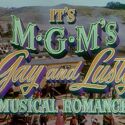
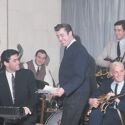
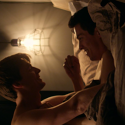



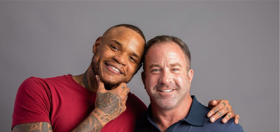

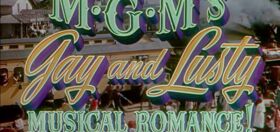
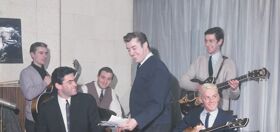


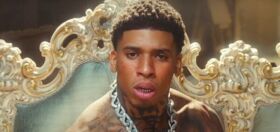



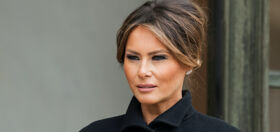
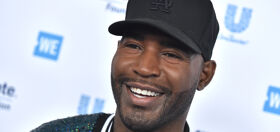
andrew hurwitz
very insightful. i think brigid shoudl consider adding “writer” and “philospher” to her resume. feel that her approach to art is very timely and her approach to life is
inspring. looking forward to her filling up her apartment with art so that some of it spills out to the rest of the world. a box is a box, a bone is a bone, a box of bones is curious. genius.
Mary Scruggs
Genius! I agree with Andrew. Brigid is a genius. I’ve known that for at least 20 years. I knew this before she ever started kindergarten. But, then, I am prejudiced toward Brigid – and her work – and, I agree, she should/could be a writer, philosopher, also.
I remember some of her early work – dark, mysterious, pen and ink drawings side-by-side with her poetry. It was dark, coming from a troubled soul, from a frustrated, gifted young lady trying to find her place in the mixed-up world, but worthy of being published. We were often sorry we couldn’t help her more, but what can two such “logical†people do but love her, support her wishes and dreams.
And, now they are coming true. WOW! Incredible. I guess all those art supplies we bought you every birthday and Christmas finally paid off.
After this interview, your earlier work makes more sense, Brigid. All of this from a 7 year-old who once said, that when she grew up, she would, “Get a doctorate’s degree in Psychology. And, then, be a stand-up comic.â€
By the way, we still have some of your earlier work; but you can’t have it back!
Dad says, “Ditto.â€
Kathy Vance
I’m with Andrew, Brigid is a philosopher with a great gift for the visual arts, as well. This helps her to appeal to many more people. Of course, like Mary, I am also bias as I have know Brigid for her entire life and always knew there was something incredibly special about her. Keep it up! Hope to get to NYC & see your work in person soon!
Love, Kathy
Grandmother
I’m impressed! I hadn’t seen any of this kind of your art, Brigid, and I must say that they are striking, imaginative and bold. Just as you are.
Love you!
Grandmother